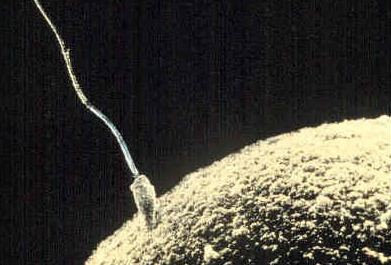 | ||
Reproductive success is defined as the passing of genes onto the next generation in a way that they too can pass on those genes. This is not solely the number of offspring produced by an individual, but also, as Ronald Fisher outlined in 1915 the probable reproductive success of those offspring, making mate choice (a form of sexual selection) an important factor in this success, making biological fitness a key element in the theories of natural selection and evolution.
Nutritional contribution
Factors like nutrition contribute to factors that influence reproductive success. These include different amounts of consumption and more specific carbohydrate to protein ratios. In some cases, the amounts or ratios of intake are more influential during certain stages of the lifespan. For example, in the Mexican fruit fly, male protein intake is critical only at eclosion. Intake at this time provides longer lasting reproductive ability. After this developmental stage, protein intake will have no effect and is not necessary for reproductive success. In addition, Ceratitis capitata males were experimented on to see how protein influence during the larval stage affects mating success. Males were fed either a high protein diet, which consisted of 6.5g/100mL, or a no protein diet during the larval stage. Males that were fed protein had more copulations than those that weren’t fed protein, which ultimately correlates with a higher mating success. Protein-deprived black blow fly males have been seen to exhibit lower numbers of oriented mounts and inseminate fewer females than more lively fed males. In still other instances, prey deprivation or an inadequate diet has been shown to lead to a partial or complete halt in male mating activity. Copulation time lasted longer for sugar-fed males than protein-fed flies, showing that carbohydrates were more necessary for a longer copulation duration.
In mammals, amounts of protein, carbohydrates, and fats are seen to influence reproductive success. This was evaluated among 28 female black bears evaluated by measuring the number of cubs born. Using different foods during the fall including corn, herbaceous, red oak, beech, and cherry, nutritional facts of protein, carbohydrate, and fat were noted, as each varied in percent compositions. Seventy-percent of the bears who had high fat and high carbohydrate diets produced cubs. Conversely, all 10 females who had low carbohydrate diets did not reproduce cubs, deeming carbohydrates a critical factor for reproductive success where fat was not a hindrance.
Adequate nutrition at pre-mating time periods showed to have the most effect on various reproductive processes in mammals. Increased nutrition, in general, during this time was most beneficial for oocyte and embryo development. As a result, offspring number and viability was also improved. Thus, proper nutrition timing during the pre-mating time is key for development and long-term benefit of the offspring. Two different diets were fed to Florida scrub-jays and breeding performance was noted to have different effects. One diet consisted of high protein and high fat, and the other consisting of just high fat. The significant result was that the birds with the high protein and high fat diet laid heavier eggs than the birds with the rich-in-fat diet. There was a difference in the amount of water inside the eggs, which accounted for the different weights. It’s hypothesized that the added water resulting from the adequate protein-rich and fat-rich diet may contribute to development and survival of the chick, therefore aiding reproductive success.
Dietary intake also improves egg production, which can also be considered to help create viable offspring. Post-mating changes are seen in organisms in response to necessary conditions for development. This is depicted in the two-spotted cricket where feeding was tested for in females. It was found that mated females exhibited more overall consumption than unmated. Observations of female crickets showed that after laying their eggs, their protein intake increased towards the end of the second day. The female crickets therefore require a larger consumption of protein to nourish the development of subsequent eggs and even mating. More specifically, using geometrical framework analysis, mated females fed off of a more protein rich diet after mating. Unmated and mated female crickets were found to prefer a 2:1 and 3.5:1 protein to carbohydrate, respectively. In the Japanese quail, the influence of diet quality on egg production was studied. The diet quality differed in the percent composition of protein, with the high-protein diet having 20%, and the low-protein diet having 12%. It was found that both the number of eggs produced and the size of the eggs were greater in the high-protein diet than the low. What was found unaffected, however, was the maternal antibody transmission. Thus, immune response was not affected since there was still a source of protein, although low. This means that the bird is able to compensate for the lack of protein in the diet by protein reserves, for example. Higher concentrations of protein in diet have also positively correlated with gamete production across various animals. The formation of oothecae in brown-banded cockroaches based on protein intake was tested. A protein intake of 5% deemed too low as it delayed mating and an extreme of 65% protein directly killed the cockroach. Oothecae production for the female as was more optimal at a 25% protein diet.
Although there is a trend of protein and carbohydrates being essential for various reproductive functions including copulation success, egg development, and egg production, the ratio and amounts of each are not fixed. These values vary across a span of animals, from insects to mammals. For example, many insects may need a diet consisting of both protein and carbohydrates with a slightly higher protein ratio for reproductive success. On the other hand, a mammal like a black bear would need a higher amount of carbohydrates and fats, but not necessarily protein. Different types of animals have different necessities based on their make-up. One cannot generalize as the results may vary across different types of animals, and even more across different species.
